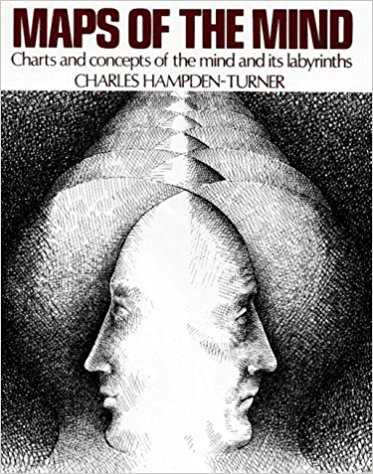Maps of the Mind: Charts and Concepts of the Mind and its Labyrinths

As an ancillary study for TechGnosis: Myth, Magic, and Mysticism in the Age of Information you may want to consider picking up a copy of Charles Hampden-Turner’s Maps of the Mind. Not to advocate for these kinds of theories, it stands as a prime example of how far off track so many of the theorists who had become ensconced in various fields of the academy, and many of whom are included in Davis’ treatment of those who have significantly contributed to theory within many fields of technological innovation. The summaries are actually to brief to be of much help, but it allows readers a taste of what can be, and is (unfortunately) taken seriously by many seemingly “intelligent” people. It acts as a good reference with regard to the Davis reading. Copies of this book can be obtained for a minimal fee: for as little as $0.49 + S&H fees which amounts to $5.49 as of this posting.
————————————————————
———————
The principles of synergy, particularly as described by Charles Hampden-Turner in “Maps of the Mind,” can be applied to critical thinking in television broadcasting. Synergy is the process by which one need or person combines optimally with another. A metaphor for the idea of the concrete and the abstract working together while they are at the same time at opposite ends of a continuum is the tetrahedron, triangles combined in such a way as to form a three-dimensional structure of strength and integrity. The sides of these triangles can be named to represent values and processes involved in creating and evaluating a miniature artistic as well as commercial television presentation–the 30-second spot. Analysis of what one sees and hears on television establishes a way to make the media problematic to students. An analysis of three 1987 Clio award-winning commercials illustrates the quality and sophistication of communicating meanings and persuasions by means of television techniques, skills, and artistic principles. In these commercials, information is communicated in abstract and concrete ways–both work together. It is important for students to analyze what is seen and heard on television by questioning the abstract and concrete aspects of information.
==> An Amazon Link <==